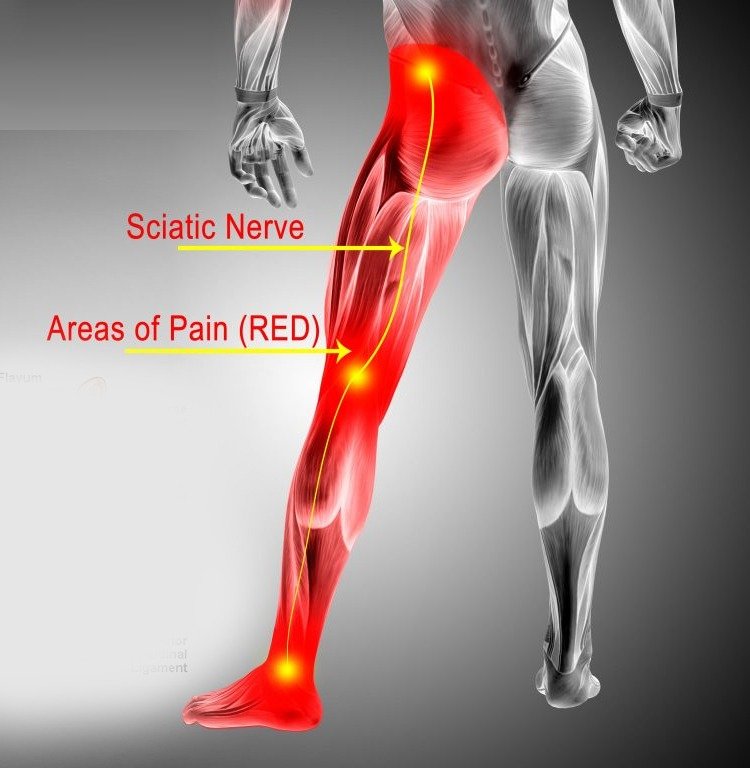(#7) Exercises to Relieve Symptoms of Sciatica
Sciatica is a common condition that causes pain, numbness, and tingling in the lower back and legs. It occurs when the sciatic nerve, which runs from the lower back down to the feet, becomes compressed or irritated. There are a variety of exercises and stretches that can help relieve the symptoms of sciatica. Here are some exercises to try:
1.Supine Piriformis Stretch: This exercise helps to stretch the piriformis muscle, which can alleviate pressure on the sciatic nerve.
Instructions:
Lie on your back with your knees bent and your feet flat on the floor.
Cross one leg over the other, placing your ankle just above your knee.
Using your hands, gently pull your bottom leg towards your chest until you feel a stretch in your buttock and hip.
Hold for 15-30 seconds, then release and repeat on the other side.
Video link: https://www.youtube.com/watch?v=yW8sWtJ0QYw
2. Seated Forward Bend: This exercise stretches the hamstrings, which can help alleviate tension on the sciatic nerve.
Instructions:
Sit on the floor with your legs straight out in front of you.
Inhale and raise your arms overhead.
Exhale and hinge forward at your hips, reaching for your toes or as far as is comfortable.
Hold for 15-30 seconds, then release.
Video link: https://www.youtube.com/watch?v=9ZN3Evq3n54
3. Knee-to-Chest Stretch: This exercise helps to stretch the lower back and buttocks, relieving pressure on the sciatic nerve.
Instructions:
Lie on your back with your legs straight out in front of you.
Slowly bring one knee towards your chest, using your hands to hold it in place.
Hold for 15-30 seconds, then release and repeat on the other side.
Video link: https://www.youtube.com/watch?v=2rU6g1Tw6Jc
4. Standing Hamstring Stretch: This exercise helps to stretch the hamstrings, which can relieve tension on the sciatic nerve.
Instructions:
Stand with your feet hip-width apart.
Step forward with one foot and bend your front knee slightly.
Keeping your back straight, hinge forward at your hips until you feel a stretch in the back of your thigh.
Hold for 15-30 seconds, then release and repeat on the other side.
Video link: https://www.youtube.com/watch?v=vrzvOoJ0Odc
5. Reclining Pigeon Pose: This exercise helps to stretch the hip rotators, which can relieve pressure on the sciatic nerve.
Instructions:
Lie on your back with your knees bent and your feet flat on the floor.
Cross one ankle over the opposite knee, flexing your foot.
Using your hands, gently pull your bottom leg towards your chest until you feel a stretch in your hip.
Hold for 15-30 seconds, then release and repeat on the other side.
Video link: https://www.youtube.com/watch?v=CwKuV7v3MV8
6. Figure Four Stretch: This exercise helps to stretch the hips and buttocks, which can alleviate pressure on the sciatic nerve.
Instructions:
Lie on your back with your knees bent and your feet flat on the floor.
Cross one ankle over the opposite knee, forming a figure four shape.
Grasp the back of your thigh with both hands and gently pull towards your chest.
Hold for 15-30 seconds, then release and repeat on the other side.
Video link: https://www.youtube.com/watch?v=8x1UiQECOaQ
7. McKenzie Extension Exercise: This exercise helps to relieve pressure on the sciatic nerve by extending the lower back.
Instructions:
Lie face down on a firm surface with your hands under your shoulders, palms down.
Engage your core and slowly press up through your hands, lifting your chest and upper back off the floor.
Keep your hips and legs relaxed on the floor.
Hold the position for a few seconds, then slowly lower your upper body back down to the floor.
Video link: https://www.youtube.com/watch?v=2yZoF3ZaOJc
8. McKenzie Flexion Exercise: This exercise helps to relieve pressure on the sciatic nerve by flexing the lower back.
Instructions:
Lie on your back with your knees bent and feet flat on the floor.
Place your hands under your lower back, with your palms facing down.
Slowly lift your head and shoulders off the floor, bringing your chin towards your chest.
Hold for 5 seconds, then lower your head and shoulders back down to the floor.
Video link: https://www.youtube.com/watch?v=mzOBa_2fvWw
9. Bird Dog: This exercise strengthens the lower back muscles and improves spinal stability, which can help prevent sciatica.
Instructions:
Start on your hands and knees, with your hands directly under your shoulders and your knees directly under your hips.
Slowly extend your right arm and left leg straight out, keeping your hips level and your abs engaged.
Hold for 5-10 seconds, then lower your arm and leg back down to the floor and repeat on the other side.
Video link: https://www.youtube.com/watch?v=de8oX9sA2Qo
10. Cat-Cow Stretch: This exercise helps to relieve tension in the spine and improve flexibility, which can prevent sciatica from worsening.
Instructions:
Start on your hands and knees, with your hands directly under your shoulders and your knees directly under your hips.
Inhale and arch your back, lifting your head and tailbone towards the ceiling (cow pose).
Exhale and round your spine, tucking your chin to your chest and bringing your tailbone towards your knees (cat pose).
Repeat for several breaths.
Video link: https://www.youtube.com/watch?v=6JuzZ_1LHJw
11. Wall Hamstring Stretch: This exercise helps to stretch the hamstrings, which can relieve tension on the sciatic nerve.
Instructions:
Lie on your back with your hips close to a wall.
Extend your legs up the wall, keeping your heels close to the wall and your legs straight.
Flex your feet and gently press your heels towards the ceiling, feeling a stretch in your hamstrings.
Hold for 30-60 seconds, then release.
Video link: https://www.youtube.com/watch?v=yMnzjJh_34o
Remember, it's important to listen to your body and not push yourself too far when doing these exercises. If you experience any pain or discomfort, stop immediately and consult with a medical professional.
